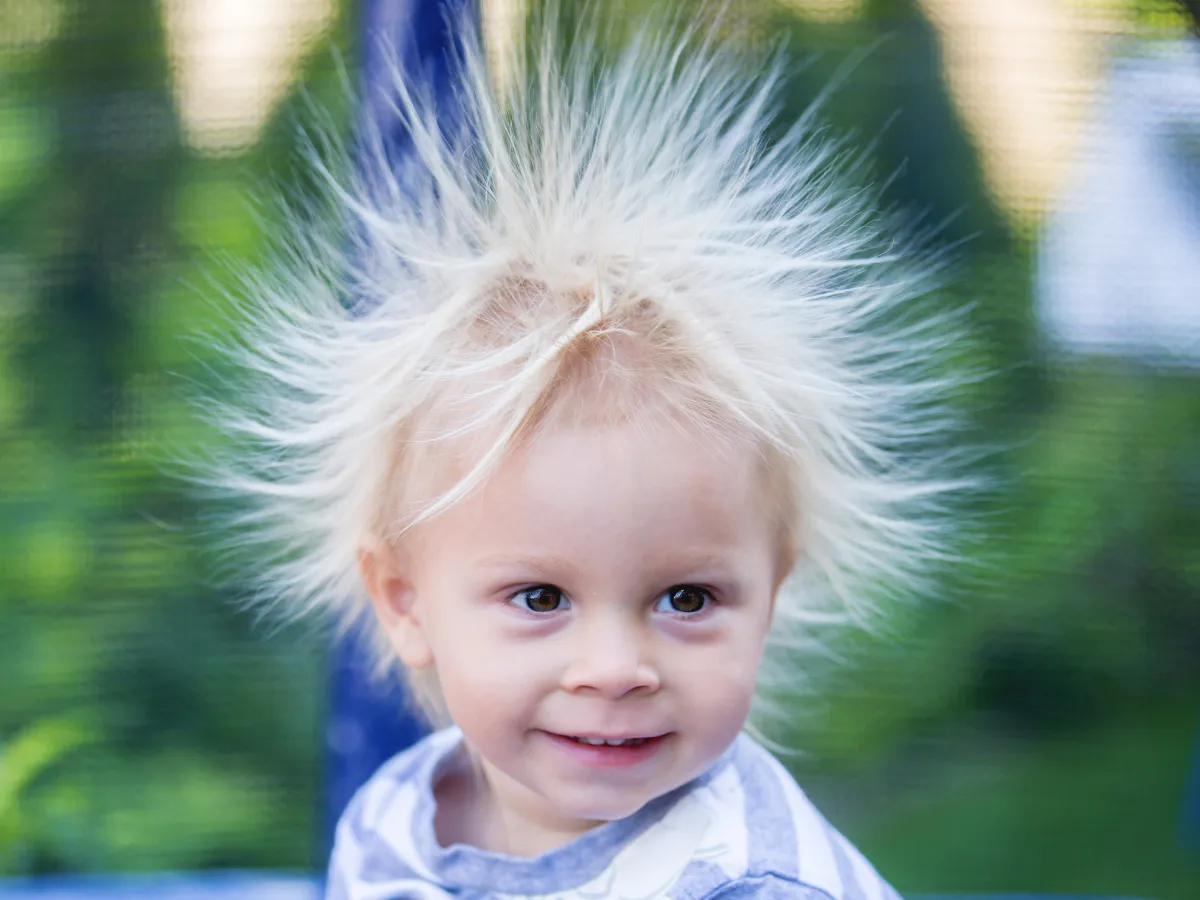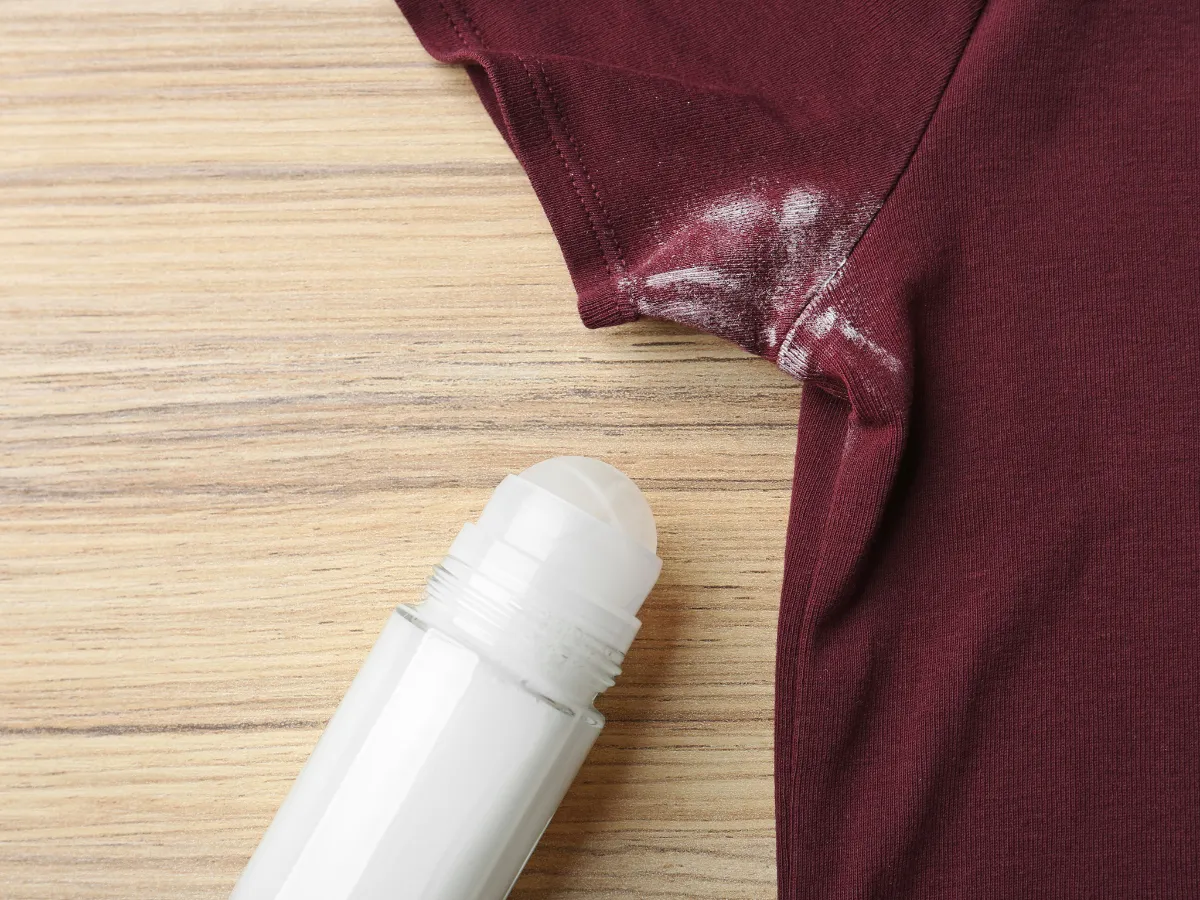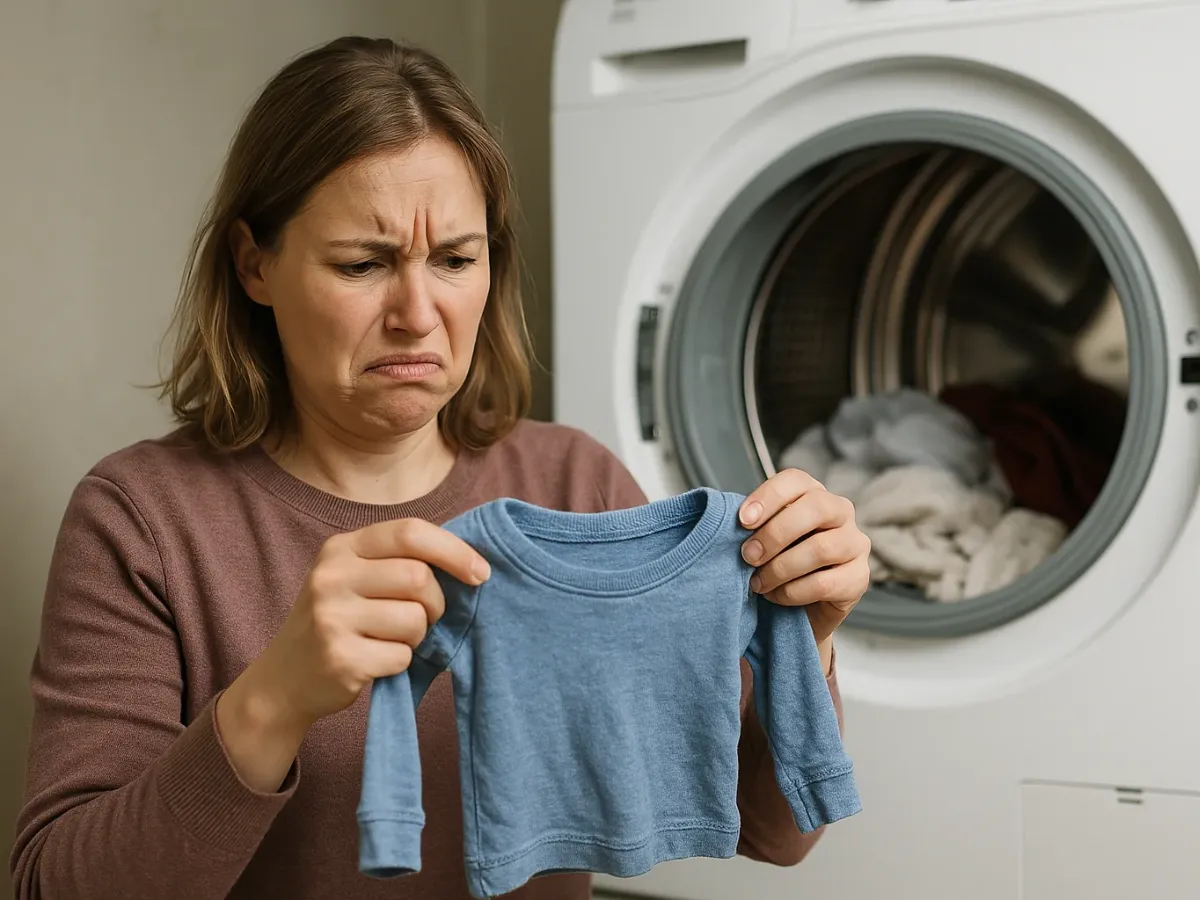Zap Away Cling! How to Remove Static Electricity from Clothes (Easy Tricks)

You put on that comfortable dress or sweater and suddenly feel it clinging uncomfortably to your body. Or worse, when taking off the garment or touching someone, sparks fly and you get a small shock! This annoying phenomenon is static electricity, and although harmless, it can be quite bothersome. If you're wondering how to remove static electricity from clothes, you're in luck, because numerous simple and effective tricks exist to combat it.
Whether the problem arises after using the dryer, on dry winter days, or simply with certain garments, in this comprehensive guide, we'll explain why static electricity occurs and give you an arsenal of solutions: from adjustments in washing and drying to quick remedies for when you're already wearing the garment.
Why Do My Clothes Have Static Electricity? The Science Behind It
Static electricity is essentially an accumulation of electrical charge on the surface of a material. In clothing, this primarily occurs due to friction between different fabrics, especially when the air is dry.
The simplified process is as follows:
- Electron Transfer: When two different materials rub against each other (e.g., a wool sweater and a polyester shirt in the dryer), one can "steal" electrons from the other.
- Charge Buildup: One material becomes positively charged (lost electrons), and the other becomes negatively charged (gained electrons).
- The Dry Air Problem: In humid environments, water molecules in the air help dissipate this accumulated charge quickly. But if the air is very dry (typical in winter with heating or after using a dryer), the charge doesn't dissipate and remains on the clothes.
- Attraction and Discharge: This built-up charge causes clothes to cling to themselves, your body (which can also hold a charge), or seek to discharge abruptly upon touching a conductive object (like metal or even another person!), producing the spark.
Which materials are more prone? Synthetic fibers like polyester, nylon, acrylic, and wool tend to generate and accumulate more static charge than natural fibers like cotton or linen, which retain moisture better.
Solutions During Washing: Preventing from the Start
You can start fighting static right from the washing machine:
- Fabric Softener (in Moderation): Commercial softeners coat fibers with chemical lubricants that reduce friction during washing and drying, lessening static generation. But beware! Softener is not recommended for towels (reduces absorbency), technical sportswear (clogs breathable pores), or baby clothes. Use sparingly. Homemade alternatives exist, as we explain in how to make homemade softener.
- White Vinegar: The Natural Ally. Adding half a cup of white vinegar to the rinse cycle (in the softener compartment) is an excellent anti-static trick. It helps relax fibers, removes detergent residue (which can contribute to static), and acts as a natural softener. The smell disappears upon drying!
- Baking Soda: Adding a quarter or half cup of baking soda to the drum along with the detergent can help balance electrical charges in the water and reduce static. It also softens and deodorizes.
- Separate Fabrics: If possible, avoid washing highly synthetic garments with natural fibers, as the friction between them is a primary source of static.
Combating Static in the Dryer
The dryer, with its combination of heat and friction in dry air, is the perfect breeding ground for static electricity. Here's how to minimize it:
- Don't Over-Dry: Removing clothes when they are still slightly damp is one of the best ways to prevent static. Residual moisture helps dissipate charge. Over-drying desiccates fibers and enhances the problem. Dryers with moisture sensors are ideal.
- Anti-Static Dryer Sheets: These are sheets impregnated with softener and anti-static agents released by heat, lubricating fibers and reducing friction. They are effective but add chemicals and fragrance.
- Wool Dryer Balls: Help separate clothes, improving air circulation and reducing drying time. By reducing friction and drying time, they also lessen static. You can add a few drops of essential oil for scent.
- Aluminum Foil Balls: A popular home remedy. Make 2-3 compact balls of aluminum foil (tennis ball size) and toss them in the dryer with the clothes. The metal helps discharge static electricity generated during the cycle. They are reusable.
- Shake Out When Removing: Right as the cycle ends, while clothes are still warm, take items out one by one and shake them well. This helps release some built-up charge.
- Separate Synthetics: If possible, dry synthetic garments separately or remove them slightly earlier than natural fiber items.

Remember that excessive heat can also cause clothes to shrink, so controlling temperature and time is doubly beneficial.
Quick Fixes: Removing Static Without Washing (Already Dressed!)
Already dressed and notice your skirt clinging or sweater crackling? Try these instant tricks!
- Moisture to the Rescue:
- Damp Hands: Lightly moisten your hands with water and gently run them over the surface of the garment. The moisture will dissipate the charge.
- Water Spritzer: Spray a very fine mist of distilled water (to avoid hard water spots) onto the garment from a distance.
- Hairspray: A classic! Hold the can about 8-12 inches (20-30 cm) away and spray a very light, even mist over the garment (especially on the inside if it's clinging). The alcohol and other components help neutralize the charge. Test on hidden area first! Especially on silk or delicates.
- Commercial Anti-Static Spray: Products specifically designed for this purpose. Follow package instructions.
- The Metal Hanger Trick: Run a metal hanger over the entire surface of the garment (inside and out). The metal will absorb and discharge the static electricity.
- Touch Grounded Metal: Before putting on or taking off the garment, touch a large metal object that is grounded (a faucet, radiator, metal window frame...). This will discharge you, reducing the chance of sparks.
- Hidden Safety Pin: Attach a small metal safety pin to an inside seam of the garment (pants, skirt, dress). The metal will help dissipate built-up charge as you move.
- Moisturizer: Applying lotion to your hands and legs before dressing can help. Dry skin promotes static buildup.
Long-Term Prevention: Creating a Less "Electric" Environment
- Increase Room Humidity: Especially in winter, use humidifiers at home to maintain relative humidity between 40% and 50%. Less dry air drastically reduces static.
- Choose Natural Fibers: Whenever possible, opt for clothing made of cotton, linen, silk, or viscose, which generate less static than polyester, nylon, or acrylic.
- Leather-Soled Shoes: Rubber soles insulate, building up charge on your body. Leather soles help discharge it as you walk.
Also, ensuring clothes are well-rinsed, without detergent residue, helps. If you notice residue, review our tips on removing stains and residues.
Frequently Asked Questions about Static Cling
How to remove static electricity from clothes without washing?
Run damp hands over them, spray hairspray from afar, use anti-static spray, rub with a metal hanger, or touch grounded metal.
What is good for removing static from clothes?
Vinegar in rinse, baking soda in wash, wool/aluminum balls in dryer, anti-static sheets, sprays, hairspray, or simply moisture.
How is static electricity eliminated?
By adding moisture (water, humidifier) or grounding the charge (contact with metal).
Can I remove static electricity from clothes with hairspray?
Yes, spray a light mist from about 8-12 inches. Test on hidden area first.
Static electricity in clothes can be a nuisance, but as you've seen, combating it is easier than it seems. From adjusting your washing and drying routine to applying quick tricks when you're already wearing the garment, you have many tools at your disposal to keep static at bay and enjoy your clothes without shocks or uncomfortable clinging.
Static-Free Drying? Try LaColada!
One of the biggest culprits of static electricity is over-drying in the dryer. At LaColada Self-Service Laundry Ponferrada, our professional dryers allow precise control over temperature and time. You can choose shorter cycles or lower temperatures to minimize friction and avoid over-drying fibers, thus reducing static buildup. Get fast, efficient drying while caring for your clothes!
Dry Your Clothes Without Sparks at LaColada!
Sebastián R.
More than 10 years at the helm of Lacolada Lavanderia Autoserivico Ponferrada and repairing industrial and domestic machinery in my spare time. You won't find unverified theories from the internet here, just real solutions tested by someone who gets their hands dirty every day.
More Tips for Your Clothing Care

How to Effectively Remove Deodorant Stains (White & Yellow)
Eliminate unsightly deodorant marks from your clothes.

How to Make Homemade Fabric Softener (Natural & Economical)
Natural and effective alternatives to commercial softener.

Does the Dryer Shrink Clothes: Myths, Truths & Prevention
Discover why clothes shrink and how to avoid it.